Search Results
Fine Jewelry University Articles matching: “SETTING NAMES”
Showing only FJU Article results. Click here to show all results.
Fine Jewelry University (Show All FJU Articles)
-
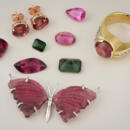
Gem in the Spotlight: Tourmaline
… a Mohs hardness of 7 to 7.5 which makes it softer than topaz or sapphire and harder than tanzanite or opal. Tourmaline is found in a huge variety of colors (sometimes even within the same gem), and some of these colors have their own names: Rubellite: is red, pinkish red, orangy red, or pink tourmaline. Indicolite: is dark blue, dark violetish blue, or dark greenish blue tourmaline. Paraíba: is a copper colored blue, intense violetish blue, or greenish blue tourmaline …
-
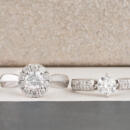
Anatomy of a Ring
…? As a final point on heads it is important to note that not all rings have a head. Some designs incorporate the setting of the gemstone directly into the rest of the ring without using a separate part. These designs can use a combination of…
-
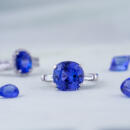
Gem in the Spotlight: Tanzanite
… is stable and won’t be harmed under normal conditions the low hardness and poor to fair toughness (and a property called cleavage, which is a tendency to break when struck) means that care should be taken to avoid sharp impacts. Setting it in earrings or a pendant will help protect it if the intended use is daily wear. Rings and bracelets set with tanzanite should only be worn carefully on occasion. We recommend cleaning with warm soapy water and a soft bristle brush. You…
-
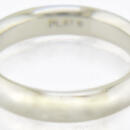
Platinum
…. It is resistant to tarnishing and discoloration due to chlorine and other chemicals. These factors, along with its strength and white luster, have made platinum an increasingly popular choice for jewelry, either on its own or as the setting for diamonds and other precious gemstones. Platinum jewelry does not fade or tarnish and keeps its looks for a lifetime. Platinum’s purity makes it hypoallergenic and ideal for those with sensitive skin. All the platinum ever mined …
-
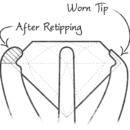
Jewelry Repair FAQ
… gold and rhodium plated, you may notice the plating wearing off and the ring taking on a slight yellowish hue. If this bothers you, you can stop by more often to have it replated. Some jewelry with very fragile stones or light weight setting styles may need more frequent visits depending on how often you wear it. Some jewelry may need very little maintenance even after years of wear. After a few checkups, you will get a feel for how your jewelry wears and what the best …
-
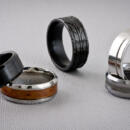
Alternative Metals for Men’s Jewelry
… you can exchange your ring for a different size). Carbon fiber wedding bands display high style and strength setting the wearer apart from the crowd. Ceramic (Titanium Carbide) Ceramic jewelry, like many of the “alternative metals” is …which fades overtime. Zirconium is currently the only permanently black jewelry that is workable enough to allow the setting of diamond or other gems. Ceramic is another permanently black option (it can even be made a more pure black than …
-
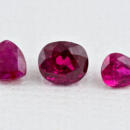
Gem in the Spotlight: Ruby
… diamonds weighing a total of 5 carats. In 2015, Sotheby’s put the ring up for auction where it sold for a record setting $30.42 million dollars to an anonymous Swiss buyer. Care and Cleaning of Ruby Rubies are sturdy stones, but are still …ultrasonic cleaning machine with rubies, but use caution as these machines can cause loose gems to come out of their settings. Remember to dry your ruby jewelry thoroughly before wearing or storing. Why Ruby? Rubies are a truly remarkable …
-
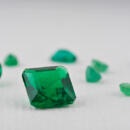
Gem in the Spotlight: Emerald
… received a 23.46 carat emerald and diamond pendant/brooch from her future husband Richard Burton during the shooting of Cleopatra . She wore the emerald on her wedding day and it was later sold at Christies in 2011 for $6.6 million, setting the record for the most expensive emerald jewelry ever sold at auction. The Chalk Emerald is a famous 37.8 carat emerald known for its clarity and rich green color. It was donated to the Smithsonian by Mr. and Mrs. O. Roy Chalk in 1972…